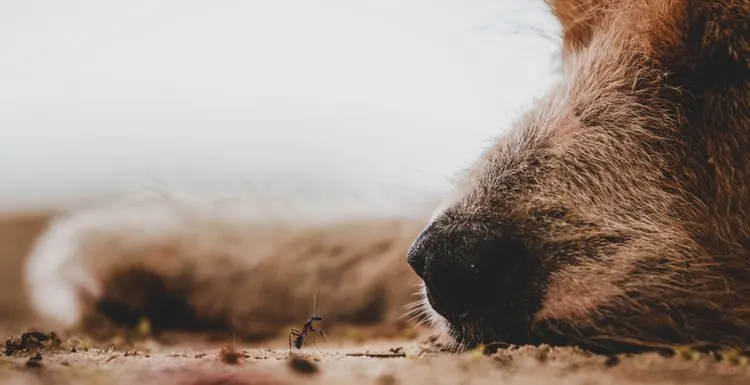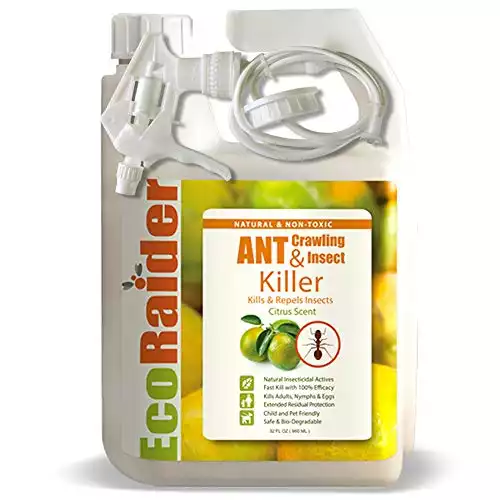When you’re out shopping for a product to eradicate ants from your home, you should look for ant killers that are clearly labeled “pet-safe.”
Many products boast this label, and there are countless options to choose from.
Pet Safe Ant Killer Considerations
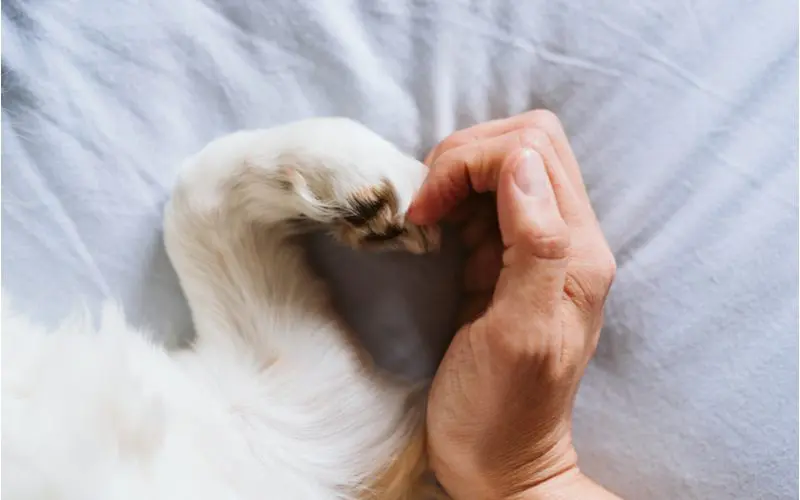
Eva_blanco/Shutterstock
Even pet-safe products can pose low risks to your pet. Understanding what to look for when shopping for a pet-safe product will help you choose the best ant killer for your home.
‘Pet Safe’ Doesn’t Always Mean ‘No Risk’
“Pet safe” is an umbrella term that can mean different things in different contexts. By no means does “pet safe” equal “no risk,” which is why it’s essential to do your homework on a product before you use it around your four-legged friend.
You can get rid of your ant problem while keeping a happy and healthy pet by understanding what products are on the market.
What to Look for in Pet-Safe Ant Killers
Some insecticides may advertise as pet-safe but can still be harmful or lethal to your pet if ingested. You can investigate different options and their active ingredients to ensure that you’ll get rid of ants without putting your pet at risk.
Safe Active Ingredients:
The easiest way to tell if a product is safe for your pet is by looking at the active ingredients on the label. Here are some of the most common components you might see:.
- Essential Oils: natural extracts from plants that can deter pests, such as lavender, wintergreen, peppermint, and geranium. Can cause skin irritation if they come into contact with the skin.
- D-Limonene: an orange peel extract that acts as a nerve toxin against insects but can be harmful if ingested.
- Diatomaceous Earth: fossilized shells of microscopic marine life. Use food-grade diatomaceous earth when using it around pets since it’s safe if consumed.
- Indoxacarb is a pesticide generally safe for mammals.
Unsafe Active Ingredients:
If a product has any of these active ingredients, it’s safest to use outdoors. Using these products indoors without proper ventilation or application can be harmful to you and your pet.
- Hydramethylnon: Typically found in ant bait intended for outdoor use. If ingested by a dog, it can cause gagging or vomiting.
- Thiamethoxam is less toxic to mammals than it is to insects, but it can still be harmful to your pet.
- Bifenthrin is a naturally occurring chemical found in many ant sprays. If Bifenthrin comes into contact with the skin, it can cause numbness and itching. If your pet ingests this chemical, it can result in vomiting, headaches, dizziness, nausea, and mouth ulcers.
- Boric Acid: This can cause nausea, diarrhea, vomiting, and loss of appetite.
Types of Pet-Friendly Ant Killers
When you’re looking for an ant killer that won’t harm your pet, there are numerous options to choose from.
Sprays
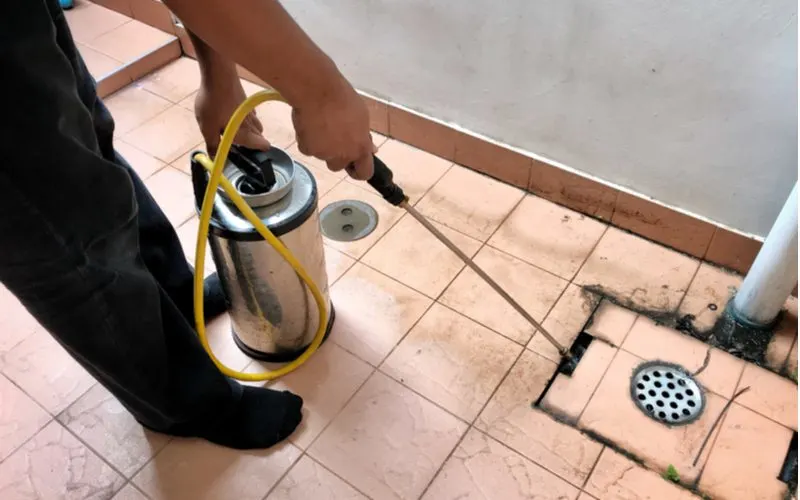
VasitChaya/Shutterstock
Sprays are the most commonly used ant killers. You can find several sprays that contain only natural ingredients and are extremely pet-friendly.
Using a spray around your home also has the added benefit of creating a protective barrier that prevents ants from returning for some time.
While there are countless sprays to choose from online, you can also make your DIY spray. By just using dish soap and water, you can create your own low-cost zero-risk ant killer.
In a spray bottle, add the following:
- 30 drops liquid dish soap
- Fill bottle ¾ with water
- Mix well
Gels
Ant killer gels come in a small tube or syringe to easily apply the formula to any cracks or crevices in your home. Pet-safe ant killer gels won’t harm your pet if small amounts are ingested. Be sure to store the tube out of reach of your pet.
Traps/stations
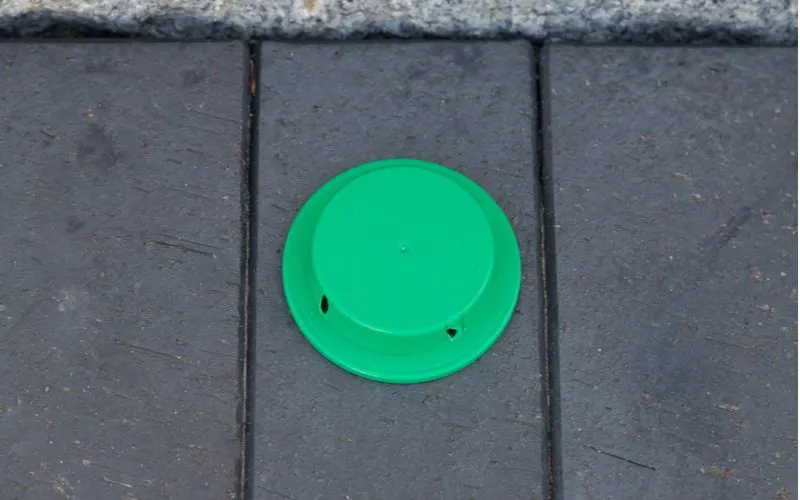
CorinnaL/Shutterstock
Ant traps or stations are popular ant killers for both indoor and outdoor use. They’re tiny plastic containers that often have peanut butter inside to attract ants and a small amount of poison to kill them.
The poison used in ant traps that say they are pet-friendly tends to be low-risk. However, the trap itself can pose a danger to your dog if ingested.
Because dogs love peanut butter and will likely be curious about the mechanism, you must place ant traps somewhere your dog can’t get them.
Where to Place Pet-Safe Ant Killers
Pet-safe ant killers like traps and bait stations should always be placed far out of reach of your pet.
Try placing an ant trap underneath a dresser, behind a console table, or inside a cabinet to keep your curious four-legged friend from accessing it. You should never put pet-safe sprays and gels on pet beds, toys, or food bowls.
If you’re concerned about any of these items, you can use the dish soap and water mix to clean your pet’s things without directly applying an ant killer.
If your pet has a bed in the corner of a room or up against the wall, be sure to move it to the center of the room when spraying.
Prevent Ants From Returning
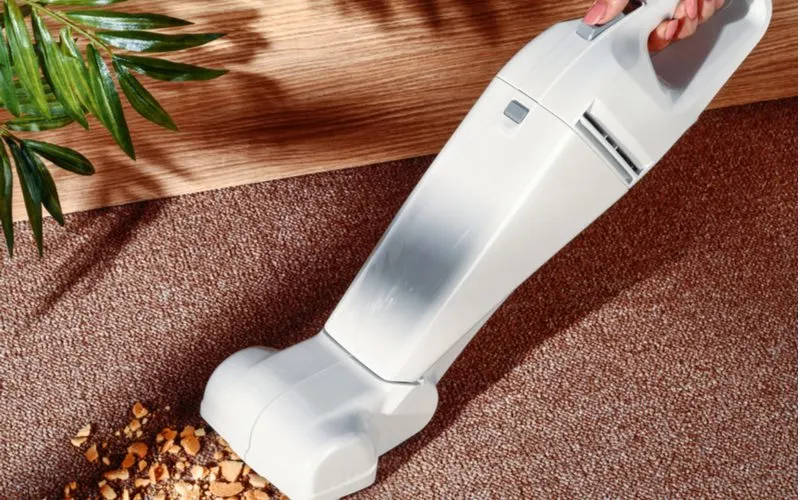
Miguel G. Saavedra/Shutterstock
If you’ve recently eradicated an ant problem in your home, you can follow a few simple steps to prevent the pests from returning in the future.
1. Clean Up Crumbs and Food Spills Immediately
Ants are always searching for new sources of food to prolong the survival of their colony.
The biggest reason ants invade homes is for easy access to food. Even the smallest crumbs can attract ants, which is why it’s essential to keep your space clean and free of food waste.
If you’ve accidentally spilled food inside or around your home, you should clean up the spill immediately and thoroughly to avoid attracting any pests.
2. Eliminate Access to Sources of Water
An ant colony can survive without food for several days, but without a steady water source, the colony dies quickly.
Check under sinks and fix any leaks you find. You can also wipe up any spills from your pet’s water bowl to eliminate easy access for ants.
3. Store Pet Food in Containers With Lids
While it’s easy to clean up dirty dishes and reduce access to human foods, your pet’s food is harder to hide from ants.
You should store pet food in an airtight container with a lid, and always clean up any kibble that falls out of your pet’s food bowl when they eat.
4. Use Mint as an Ant Repellant
You can use mint around your home to easily and safely deter ants from coming inside. Mint essential oils can be unsafe for pets, but mint plants are risk-free.
You can keep a mint plant inside, but you can also use them around a patio or porch to create a wider protective area around your home.
Frequently Asked Questions

Smrm1977/Shutterstock
Other pet parents tend to have these questions about pet-friendly ant killers.
Are Pet-Safe Ant Killers Effective?
Yes! Most pet-friendly ant killers use natural ingredients or essential oils, which are non-toxic to humans and mammals. The ant killer can also be effective against other insects.
What Do I Do If My Dog Eats Ant Bait?
If your dog has consumed ant bait, it’s critical to take the animal to the vet as quickly as possible. Do not try to make the pet vomit – take it to a vet, first, who can effectively handle the situation.
How Long Does It Take to Kill an Ant Colony?
It depends on what kind of ant killer you use. Killing off an entire colony can take anywhere from one day to one week.
A slower ant killer, such as the TERRO T300B Liquid Bait Ant Killer, is still a great option due to how thorough the pesticide is.
What’s the Final Say on Pet-Safe Ant Killer?
Pet-safe ant killers are just as effective as regular ant killers, but they’ll ensure your furry friend stays healthy and happy.
However, even a product labeled “pet-safe” could still pose some risk to your animal.
By understanding which ingredients go into the ant killer, you can be a responsible pet parent and eradicate your ant problem simultaneously.
Follow these tips, and you’ll be ant-free in no time!

